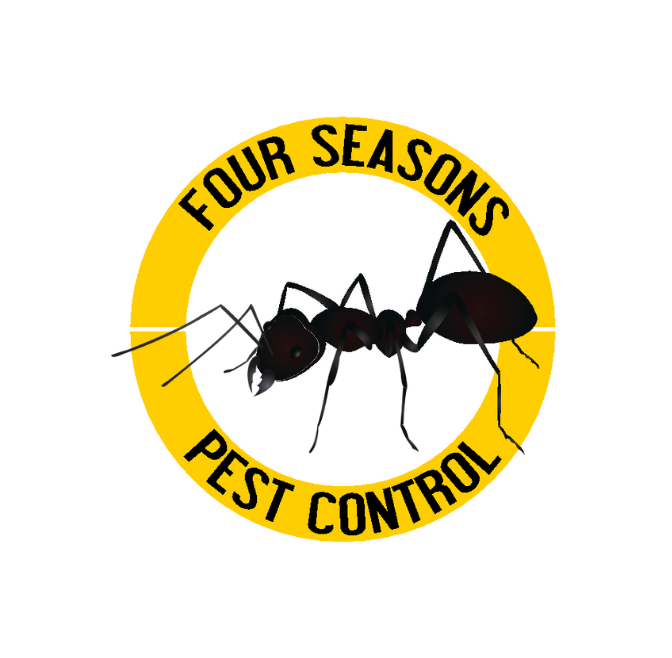Termite
Four Seasons Pest Control offers a number of termite control measures, including Termite Pre-Treat, Liquid Termite Treatment and a Termite Bait System. We stay committed to supporting you at every stage of your termite control journey. In turn, it protects your property from these destructive pests. With Four Seasons Pest Control, knowing we have your back, you can confidently face any termite-related challenges.
Subterranean Termites (Rhinotermitidae)
Termites are social insects known for their ability to consume and break down cellulose, found in wood and plant materials. They play an important ecological role by recycling dead plant matter and contributing to ecosystem nutrient cycling. However, they are also infamous for their destructive feeding habits when they infest buildings and wooden structures.
Termites are a homeowner's worst nightmare. These silent destroyers can eat away at the structure of your home 365/24/7. It does not get cold enough here for them to die off; the climate is ideal for their survival.
Key Characteristics
- Social Structure: Termites live in large colonies with specialized castes, including workers, soldiers, and reproductives (also known as swarmers). Each caste has specific roles within the colony, such as foraging for food, defending the colony, or reproducing.
- Feeding Habits: Termites eat any cellulose material. This is obtained from wood, plant debris, paper, and other organic materials.
- Nesting Behavior: Colonies typically build elaborate nests, which can vary in structure and location depending on the species. Some species construct mounds above ground, while others build nests underground or within wooden structures.
- Reproduction: Colonies produce reproductive individuals called swarmers, with wings capable of flight. During swarming season, typically in the spring, swarmers emerge from the colony in large numbers to mate and establish new colonies.
- Ecological Importance: In natural ecosystems, termites play vital roles in decomposing dead plant matter and recycling nutrients back into the soil. They help maintain soil fertility and contribute to ecosystem health.
- Destructive Potential: While beneficial in natural environments, they can pose significant problems when they infest human-made structures. Termites cause billions of dollars to damage buildings, homes, and wooden structures worldwide each year by feeding on wood and compromising structural integrity.
Treatment Options
We offer three types of treatments. One may be more suited to your home than the other.
- Liquid Termiticides: These are applied to the soil around structures to create a chemical barrier that repels or kills termites upon contact.
- Baiting Systems: Termite bait stations are strategically placed around the perimeter of a building. Termites feed on the bait and share it with their colony, leading to colony elimination.
- Pre-Treat: These are more suited for new construction homes.
Termite Control Protection
Termite protection involves various proactive measures to prevent infestations or minimize the risk of damage to structures.
- Regular Inspections: Schedule regular inspections by licensed pest control experts. They can detect signs of activity early as well as identify conducive conditions.
- Moisture Control: Termites are attracted to moisture, so addressing any moisture issues in and around the home is crucial. Fix leaks, improve drainage, and ensure proper ventilation to reduce humidity levels and discourage termite activity.
- Remove Wood-to-Ground Contact: Direct wood-to-soil contact creates an easy pathway for termites to access structures. Replace wooden fence posts, deck posts, and other wooden structures with materials that are less attractive to termites, such as metal or composite materials.
- Resistant Materials: Consider using termite-resistant materials for construction or renovation projects. Pressure-treated wood, naturally resistant woods (e.g., cedar, redwood), and concrete blocks can help deter infestations.
- Preventive Treatments: Apply preventive treatments, such as a liquid treatment, or install a bait system. These create a barrier against them before they can cause damage.
- Regular Maintenance: Keep the property well-maintained and repair damaged wood. Seal cracks and gaps in foundations and walls. Remove wood debris from around the home, such as fallen trees or lumber piles. Keep wood from being stored in the crawlspace.
- Landscaping Practices: Keep vegetation, mulch, and soil away from the home's foundation. This reduced the moisture buildup and reduces the likelihood of termite entry. Trim trees, shrubs, and other vegetation to prevent them from touching the house.
- Educate Yourself: Learn about the signs of termite activity and the conducive conditions that attract termites. Awareness can help you identify potential risk factors and take appropriate preventive measures.

